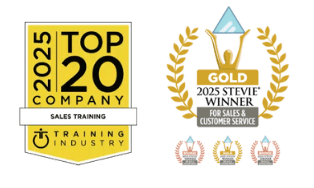Over five million people have voluntarily left the workforce, and 57% of employees say it is easier to switch jobs for a promotion. Unfortunately, the timing could not be worse for this trend to emerge. Many Sales Leaders are still adapting to the remote or hybrid working environment, which has helped fuel the talent frenzy.
The worse news is it takes on average four months to find a suitable candidate and will take an additional 6-12 months to see if they are productive. IF they do not meet expectations, the cycle continues, and the sales organization or team falls further behind. The truly frightening aspect of this current environment is recruiters have been contacting your top performers and working to extract them from your team.
Your top performers are listening to recruiters, and they are likely engaged in discussions.
They may not be ready to move – but it may be simply a matter of time. This presents a significant challenge for leaders… keep in mind – you cannot solve new challenges with old thinking. IF you subscribe to the notion that a team of 10 people generally makes their numbers on the backs of four people consistently, this could easily be a disaster.
There is a commonly expressed adage that remains true in the context of this unique situation. “People do not leave bad companies; they leave bad leaders.” I am convinced this is truer than it has ever been. Leaders must adapt. You cannot simply deploy technology and manage in the same way that you have always approached the role. The environment has changed dramatically.
There are several reasons as to why people leave – and one of the most significant is lack of alignment with the individual’s core values. The culture within your team or organization needs to change – and that is the responsibility of leaders.
This is not “rocket science” it is common sense.
To retain your people, you need to LISTEN to them, COMMUNICATE with them, and DEVELOP them. Remember, you need to adapt to your people; they should not have to adapt to you. In effort to establish a retention strategy, outside of financial remuneration – it is critical that Sales Leaders embrace three immediate remedies:
First – learn to LISTEN. Your people are sending clues about their current level of satisfaction. Pay attention and “read between the lines” – invest the time to learn more about them personally. Ask them to share their perspective on the job, their role, and their expectations. Take the time to learn what they would seek to change, what things are going well for them, and where they would like to see improvement from you as a leader. Demonstrate you have their back. In other words, do not be afraid to fight for them. People understand leadership – and they value working for someone that has their best interest at heart. If you immediately begin having these informal but highly revealing conversations – you will be amazed at what you will learn and where you can begin changing your approach for greater returns. Remember, “people don’t care how much you know, until they know how much you care.” – Theodore Roosevelt.
Second – COMMUNICATE with them. Work to have meaningful conversations with your people. Be authentic and transparent with them. Do not shy away from tough conversations, and, always let them know when they have done something well. When earned, the recognition you provide will create a dividend. The book, “One Minute Manager” emphasized “always catch your people doing something right.” It does not matter how tenured, experienced, or successful people are – we all appreciate genuine and authentic recognition. It is one of the biggest motivators and is always remembered. Recognition is a cornerstone of establishing a positive, productive, and sustainable culture. Ask yourself two questions, “What are their interests, ideas, and values?” and “What are their goals on a personal and professional level?” If you do not know, start integrating these questions into your discussions. The more you know, the greater impact you can create, and the tighter the bond will become.
Third – Invest and DEVELOP your people. Ask your people to assess themselves and isolate what you perceive to be their three greatest weaknesses. This is the perfect opportunity to collaborate and jointly create a plan for heightened performance. It is critical to note that this has to be “their” plan and not yours. Gaining buy-in is how you will gain acceptance and momentum. Investing in your people should be one of your fundamental priorities. It also demonstrates you care about them, are interested in their success, and see them as valuable. This helps establish a sustainable culture that will retain your people and attract others to work under your leadership. Do they have the skills to accomplish their goals? As a leader, it is your responsibility to coach your people and to help them continually move forward. You become their “success” coach which is an experience many have never had. This mentoring will continue to deepen the bond between you and the members of your team
The “Great Resignation” will remain a challenge for Sales Leaders for the foreseeable future. The three approaches listed above should be implemented immediately and with heart-felt passion. If you embark on building tighter bonds with your team, the success of your organization will be synergistic and yield significant returns.
Personal Challenge:
Prioritize your team to determine which team members may be particularly at risk of leaving your organization. Review the article recommendations and begin scheduling informal and authentic discussions.




